Best live vocal microphones 2025: Vocal mics for live performance
Get the very best live vocal performance with tried and tested mics from Shure, Sennheiser, Lewitt, DPA, Aston and more

Queen at Wembley ’86. Oasis at Knebworth ’96. Beyoncé at Glastonbury ’11. Toto’s Bobby Kimball at Misawa American Day ’15. Without a doubt, some of the greatest live performances ever. OK, maybe not that last one, but the following question still stands: which of these would’ve made the list were it not for that most humble of workhorses: the live vocal microphone?
The best live vocal microphones are of instrumental importance to performers and bands, whether husky-voiced whisper-singers in crowded small venues or mega-voiced megastars in mega-sized stadia. No matter how good a singer you are personally, you are beholden to your vocal mic for the quality and reception of your hard work.
To get the very best from a singer’s performance, live vocal mics need to fulfil some basic needs. First, they need to work. The stage can be a hostile environment for mics, full of strange liquids, unidentifiable sticky substances and accidents just waiting to happen. Likewise, the back of your mate’s old van that transports you from gig to gig may mist up like a steam room, but it’s no health spa. To survive life on the road, vocal mics for live duties need to be robust and reliable.
Mics need to make live vocals sound great, too - not just for the benefit of the audience, but also for the singer. What they hear in their in-ear monitors can spell the difference between a confident, spirited performance and one riddled with anxiety and self-doubt. We know which one we’d rather listen to.
Ideally, a vocal performance should sparkle with detail and clarity, but not if that means a host of other instruments and undesirable on-stage noises are being picked up by the mic, too. Some live vocal microphones are just too sensitive for real-world stage use, at least without some form of compromise.
Finally, choose a mic with a pickup pattern that matches your on-stage physicality (i.e. your tendency to dick about). A supercardioid will do a marvellous job of rejecting off-axis noise, but that will include your vocals if you’re constantly moving away from the mic while singing.
This, then, is our guide to the best microphones for live vocals, from indispensable industry-standard dynamics to glassy, studio-quality stage condensers.
Our top picks
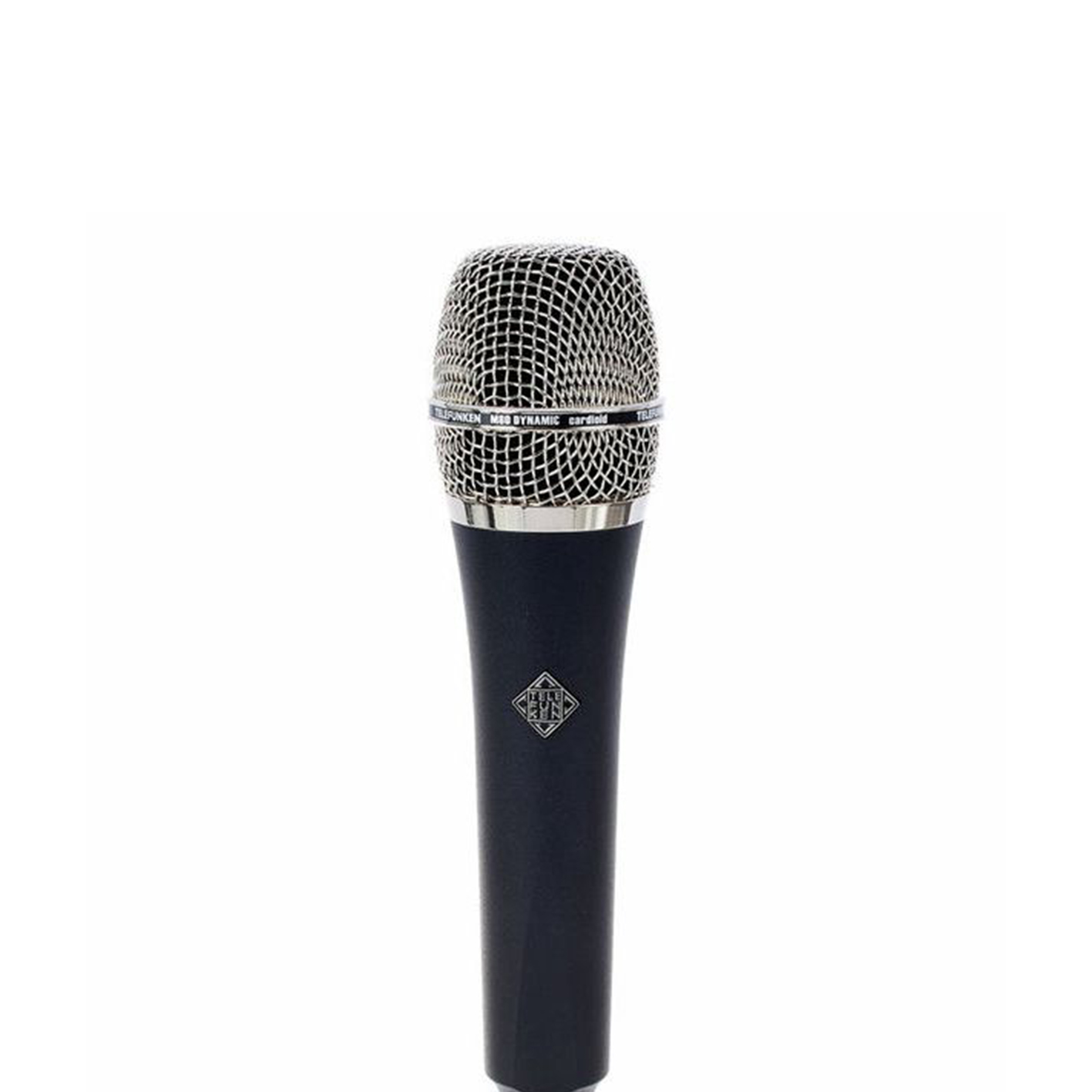
Telefunken’s engineers have successfully managed to develop a microphone with the robustness of a dynamic and the sonic characteristics of a condenser. By specifying a lightweight capsule and thin diaphragm, they’ve given the M80 a wide frequency response without compromising its rugged build. The resulting character is open - airy but authoritative, perfect for live vocals.
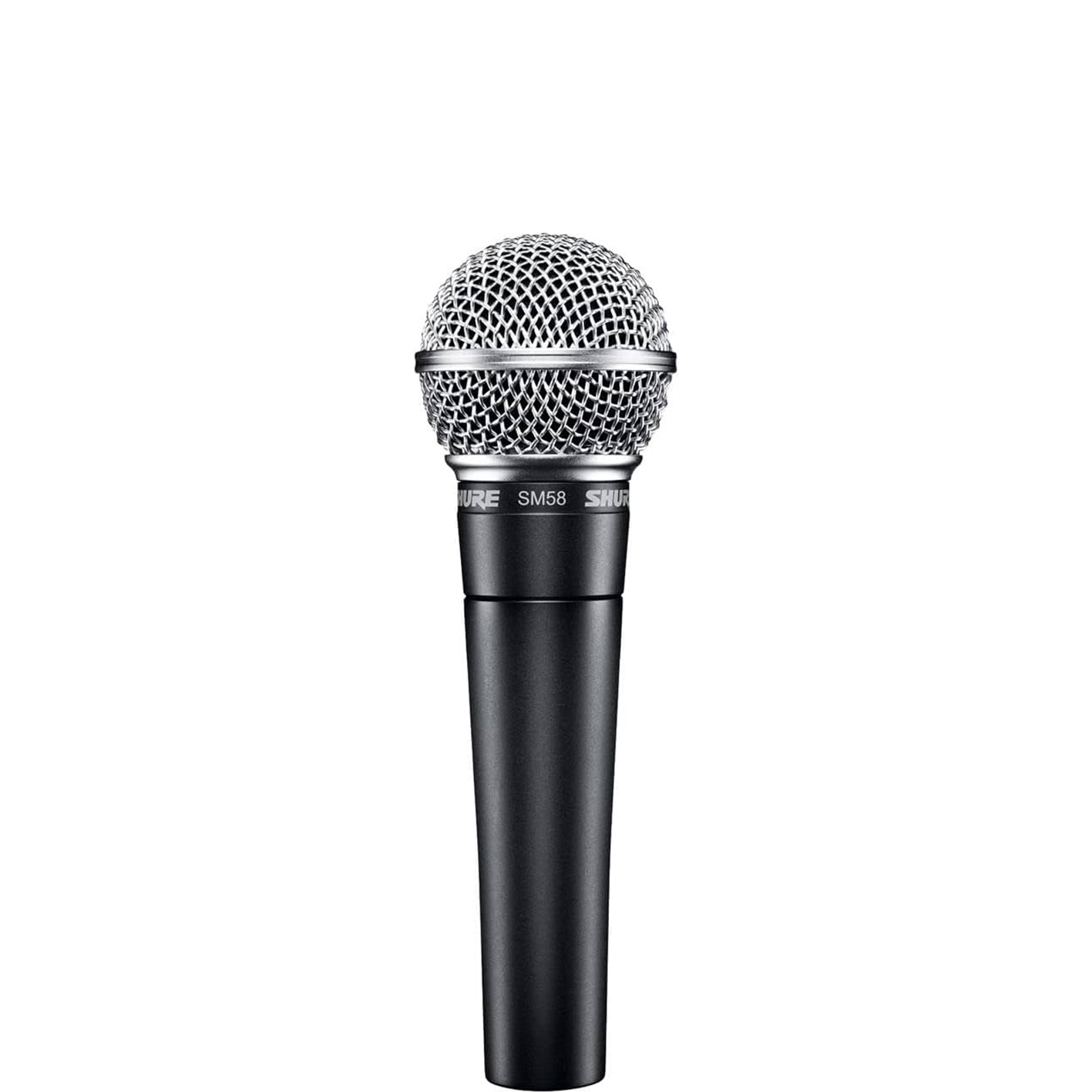
Almost certainly the most popular live mic in the whole wide world. It’s tempting to believe that the SM58’s extraordinary success is just down to Shure’s keen pricing, but the truth is that it’s an incredible performer. It sounds wonderful - clean and balanced across its entire frequency spectrum and it's built to last, with most spare parts available widely.
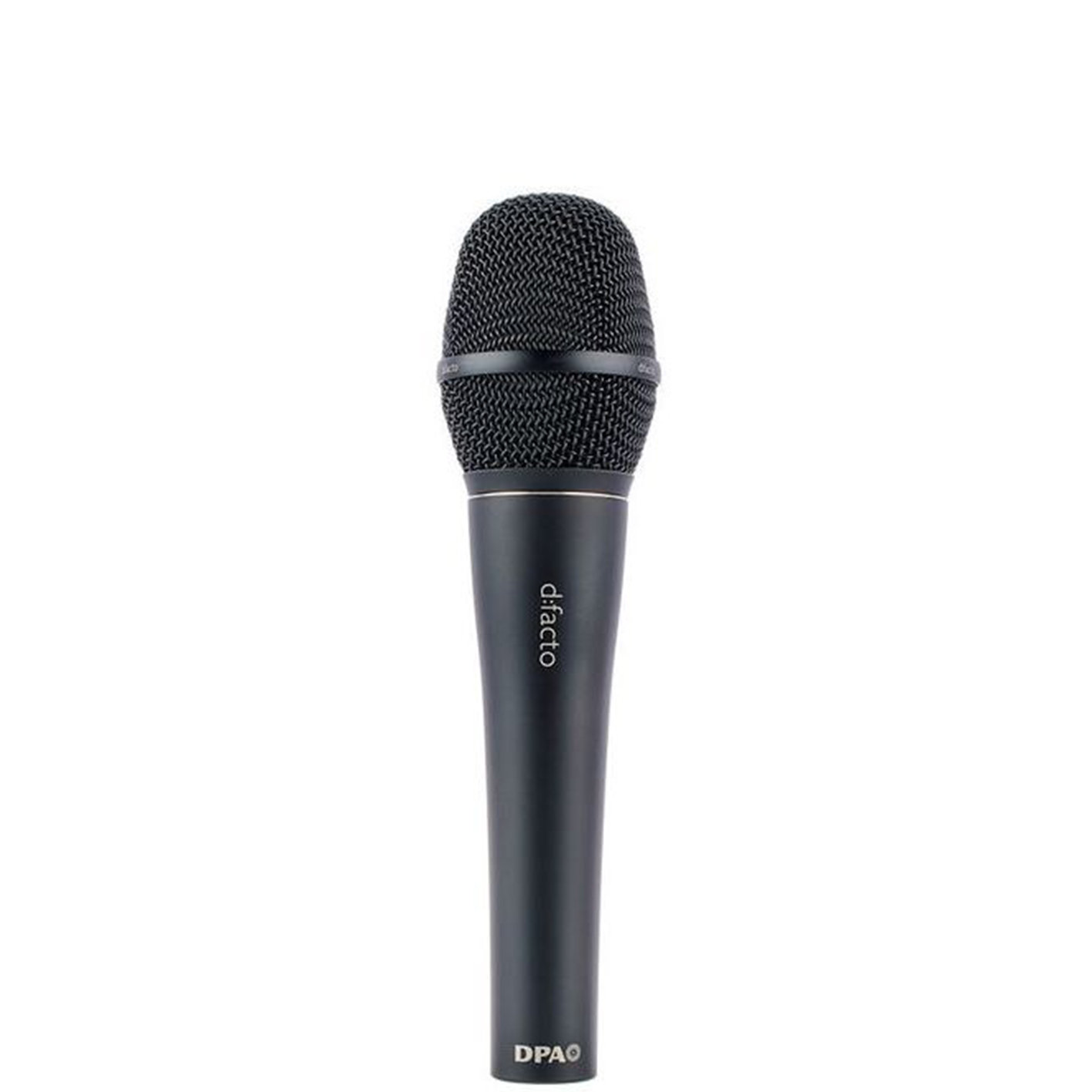
The d:facto 4018 is a studio-quality condenser mic that’s been ruggedised for stage use. It has a much broader frequency range than a dynamic microphone, but things get really interesting when you swap and switch its two available capsules. The 4018VL capsule has an ultra-flat linear response, while the 4018V has a mild presence boost that starts at about 7kHz, enabling you to fine-tune to suit your range and style.
Best overall
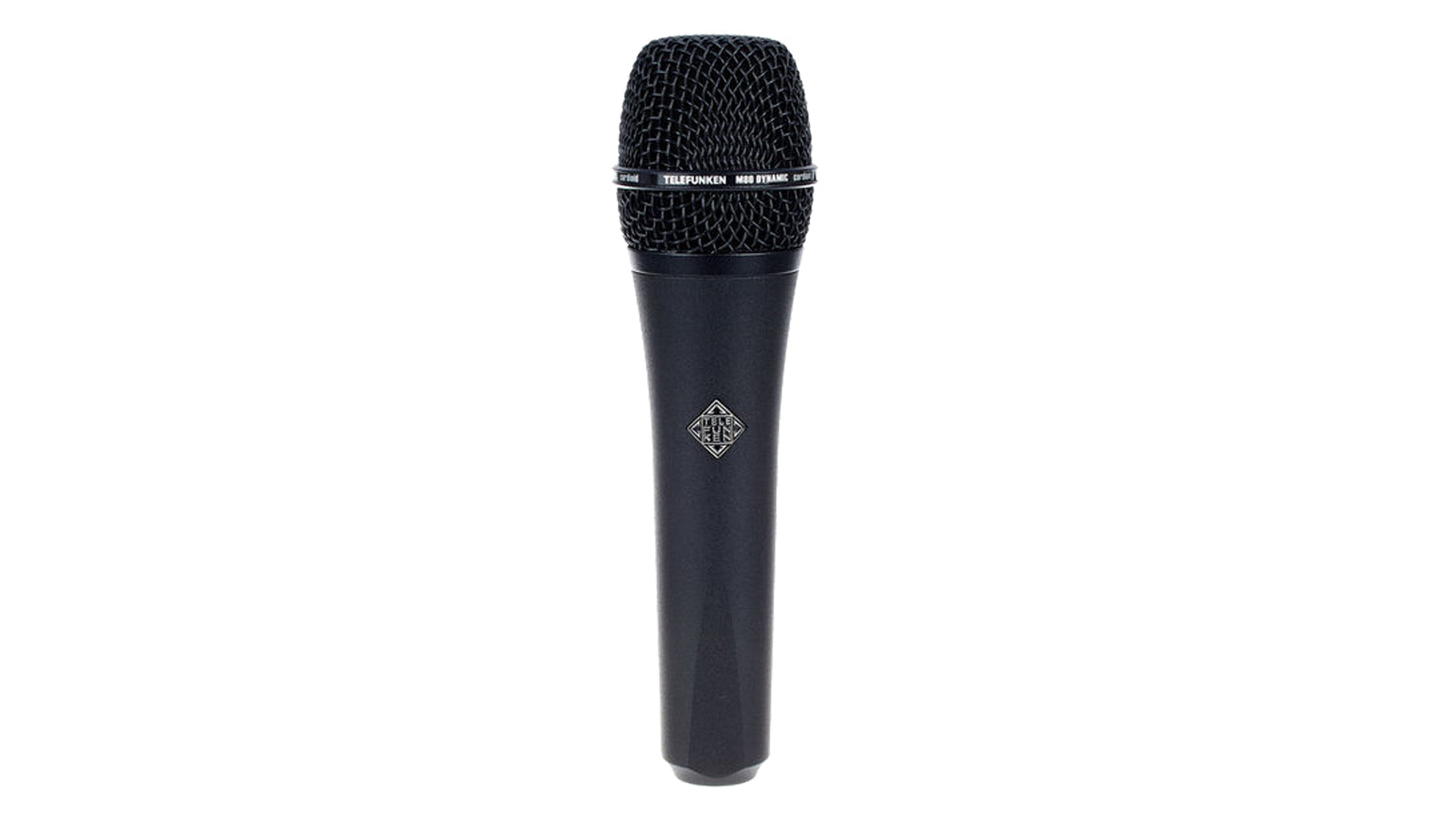
1. Telefunken M80
Our expert review:
Specifications
Reasons to buy
Reasons to avoid
Who’s shallow enough to buy a recording microphone based on looks alone? OK, OK, put your hands down. You disappoint me, you lot, you really do.
The M80 is available in some seriously bling colourways. Fluro pink, yellow, orange, gold – no fewer than 15, in fact. You can even mix and match the colour of the body and grille for maximum stage presence.
But what about the sound? Telefunken’s engineers have successfully managed to develop a microphone with the robustness of a dynamic and the sonic characteristics of a condenser. By specifying a lightweight capsule and thin diaphragm, they’ve given the M80 a wide frequency response without compromising its rugged build.
The resulting character is open – airy but authoritative, perfect for live vocals. Despite a high-end presence boost, transients are well-tamed and handling noise is nicely subdued.
It’s hardly a heavy mic but it is reassuringly hefty, tipping the scales at 430g – which is about a third more than the Shure SM58. Build quality is top-drawer. Its lines are smooth, sleek and can look rather sophisticated in black and chrome. Or great fun in fluro pink!
Best durability

2. Shure SM58
Our expert review:
Specifications
Reasons to buy
Reasons to avoid
Almost certainly the most popular live mic in the whole wide world. It’s tempting to believe that the SM58’s extraordinary success is just down to Shure’s keen pricing, but the truth is that it’s an incredible performer.
It sounds wonderful – clean and balanced across its entire frequency spectrum. Hats off to Shure’s engineers, who, six decades ago, got it so right first time around. That iconic golf-ball-shaped grille purposefully puts distance between you and the capsule, which, in combination with the built-in pop filter, reduces unwanted pops and tames sibilants. The internal shock mount cuts handling noise to a minimum, too, while the dynamic diaphragm makes the mic as tough as old boots.
Features? Buttons? Switches? LEDs? There are none, but that’s all part of the SM58’s charm. It’s a ‘does what it says on the tin’ kinda mic – living proof of the mantra ‘If it ain’t broke, don’t fix it’.
Reassuringly, in the throwaway culture we live in today, if yours does ever need fixing, it’ll be easy to source the parts. Your local blacksmith could probably repair it…
Read our full Shure SM58 review
Best pro
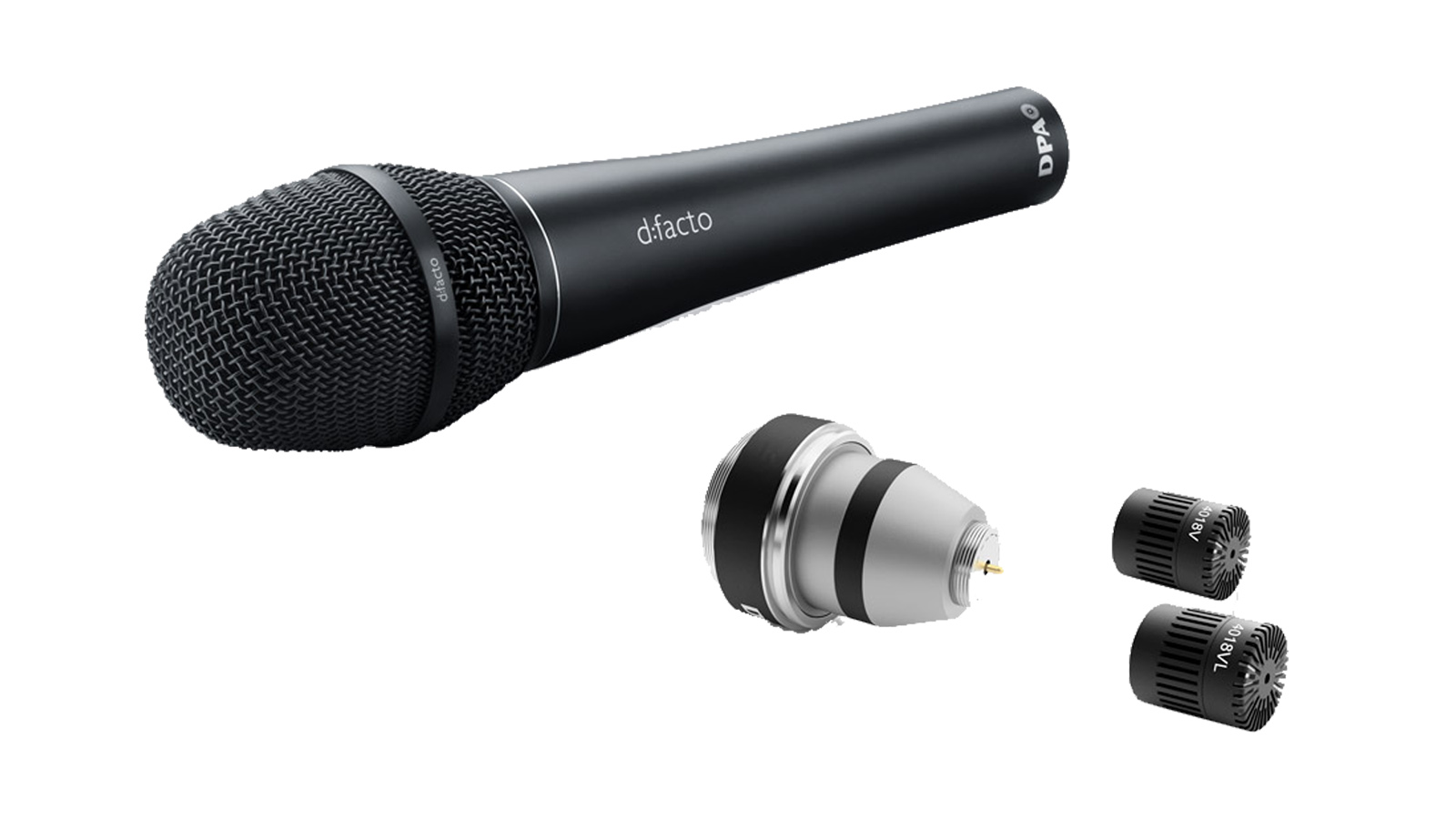
3. DPA d:facto 4018
Our expert review:
Specifications
Reasons to buy
Reasons to avoid
Some products just ooze quality, and the d:facto 4018 is such a beast. Designed, developed and hand-assembled in Denmark, it looks the part, feels the part and carries a price tag that may alarm but won’t shock.
Essentially, it’s a studio-quality condenser mic that’s been ruggedised for stage use by the clever boffins at DPA, who spend their days making reference-quality microphones for the harshest of environments. Its mics have been used to record snowflakes in icy Antarctica, are currently the ears of the Mars Rover as it explores the Red Planet, and, according to DPA’s website, have even survived abuse at the hands of Celine Dion.
Typically for a condenser microphone, the d:facto 4018 has a much broader frequency range than a dynamic microphone, but things get really interesting when you swap and switch its two available capsules. The 4018VL capsule has an ultra-flat linear response, while the 4018V has a mild presence boost that starts at about 7kHz. This gives you the opportunity to fine-tune the d:facto 4018 to suit your range and style.
Like all condenser microphones, there’s a danger it will pick up unwanted noise, but its supercardioid pattern should help to minimise this. It also has a 160dB SPL, which means it won’t be troubled by very powerful singers screaming at it.
The d:facto 4018 can also be configured to fit most professional wireless systems from the likes of Sony, Sennheiser, Shure and more.
Best value

4. sE Electronics V7
Our expert review:
Specifications
Reasons to buy
Reasons to avoid
This is a keenly priced, no-nonsense mic that loves a good performance. Its all-metal construction will shrug off years of onstage abuse, letting your vocals take centre stage show after show.
It has some clever design features, including the bevelled strip around the dent-proof, corrosion-resistant steel mesh grille, which stops the V7 rolling away when put down on an amp cab or stage floor. The integral windscreen and pop shield are coloured in sE Electronics’ corporate red but, just in case that clashes with your lippy, the manufacturer has thoughtfully included a black version in the box, too.
sE Electronics developed the DMC7 aluminium coil for the V7, which, together with the large diaphragm and neodymium magnets, gives it a voice that’s crisp, natural and open. Its supercardioid pattern provides good isolation and feedback protection, while handling noise is well suppressed.
The V7’s remarkable price puts it head-to-head with the equally inexpensive Shure SM58, so if the pressure of deciding which one to buy brings you out in hives, why not treat yourself to both? Some mics are going to suit some singers better than others, so it’s a good idea to build up an arsenal of options. The V7 is good enough to be your only live mic, but it’s also a worthy addition to any collection.
Best sound
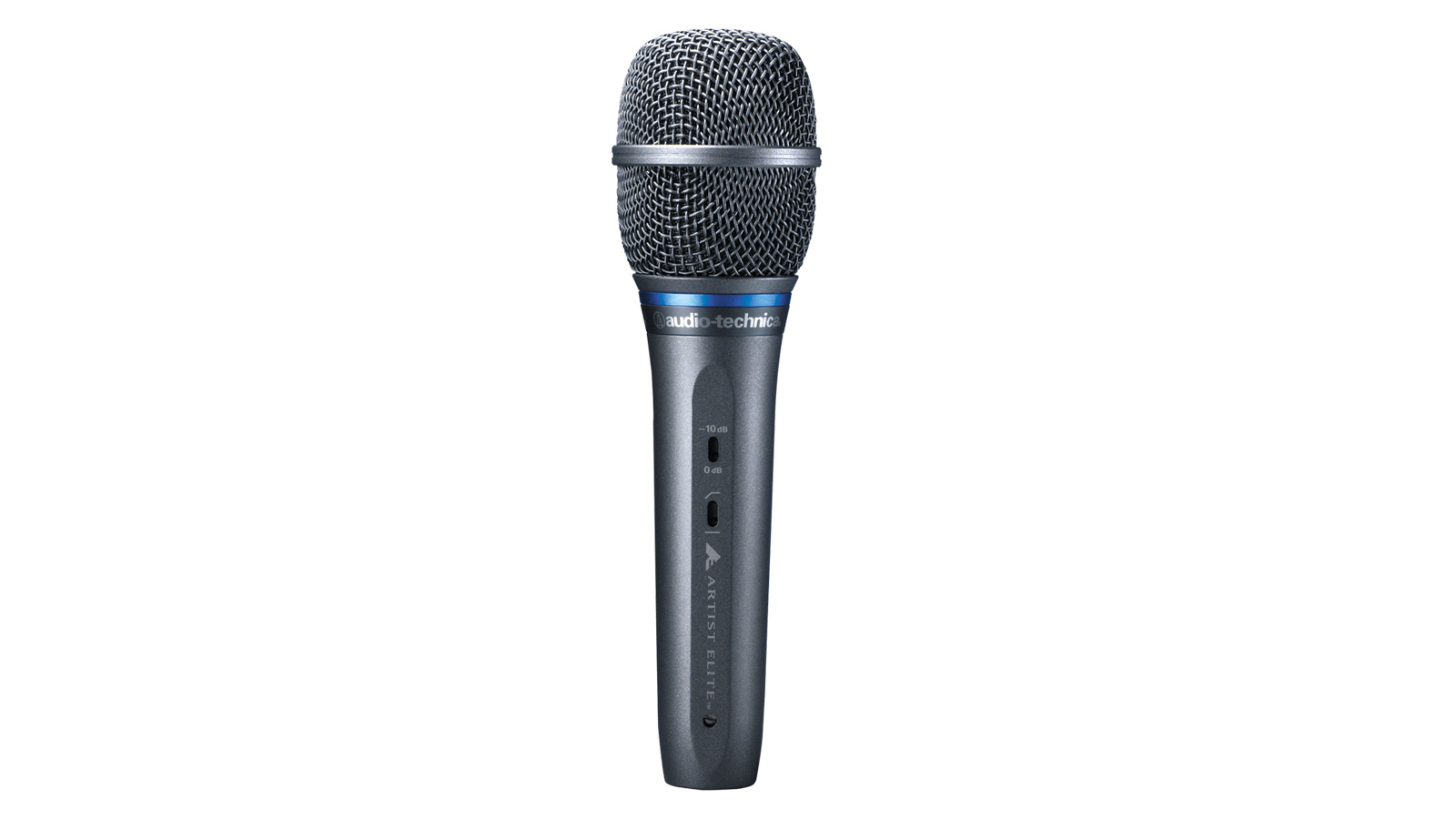
5. Audio-Technica AE5400
Our expert review:
Specifications
Reasons to buy
Reasons to avoid
Wouldn’t it be wonderful if some live vocal performances could match the sonic quality of studio recordings? We’re thinking more Lana Del Rey than Lemmy, god rest his soul. That’s the goal of the Audio-Technica AE5400, which is essentially an AT4050 studio microphone skilfully reimagined for the stage.
At its heart is the same large-diaphragm element, ready to capture every subtle hue of audio goodness. Of course, the form factor is entirely different – the AT4050 is side-address and the AE5400 has been ruggedised with a hardened steel body for live use. It also features an internal shock mounting, a built-in windshield and a custom transformer to guard against noise and RF interference.
The switchable 80Hz high-pass filter (aka low-cut filter) is there to remove low-frequency rumble generated by handling, wind and other undesirable background noises. It’s also a very useful tool for reducing plosives, taming the proximity effect and removing the low end so that the vocal can sit better in the mix.
There’s even a 10dB pad to stop loud vocalists driving the AE5400 into distortion. Some engineers hesitate at using delicate, sensitive condenser microphones for live use, preferring their tougher dynamic cousins. With its additional controls on-hand to reign back any unwanted liveliness, not to mention its competitive price, the AE5400 is a seductive package for sophisticated gigs where sound quality really counts.
Best sound
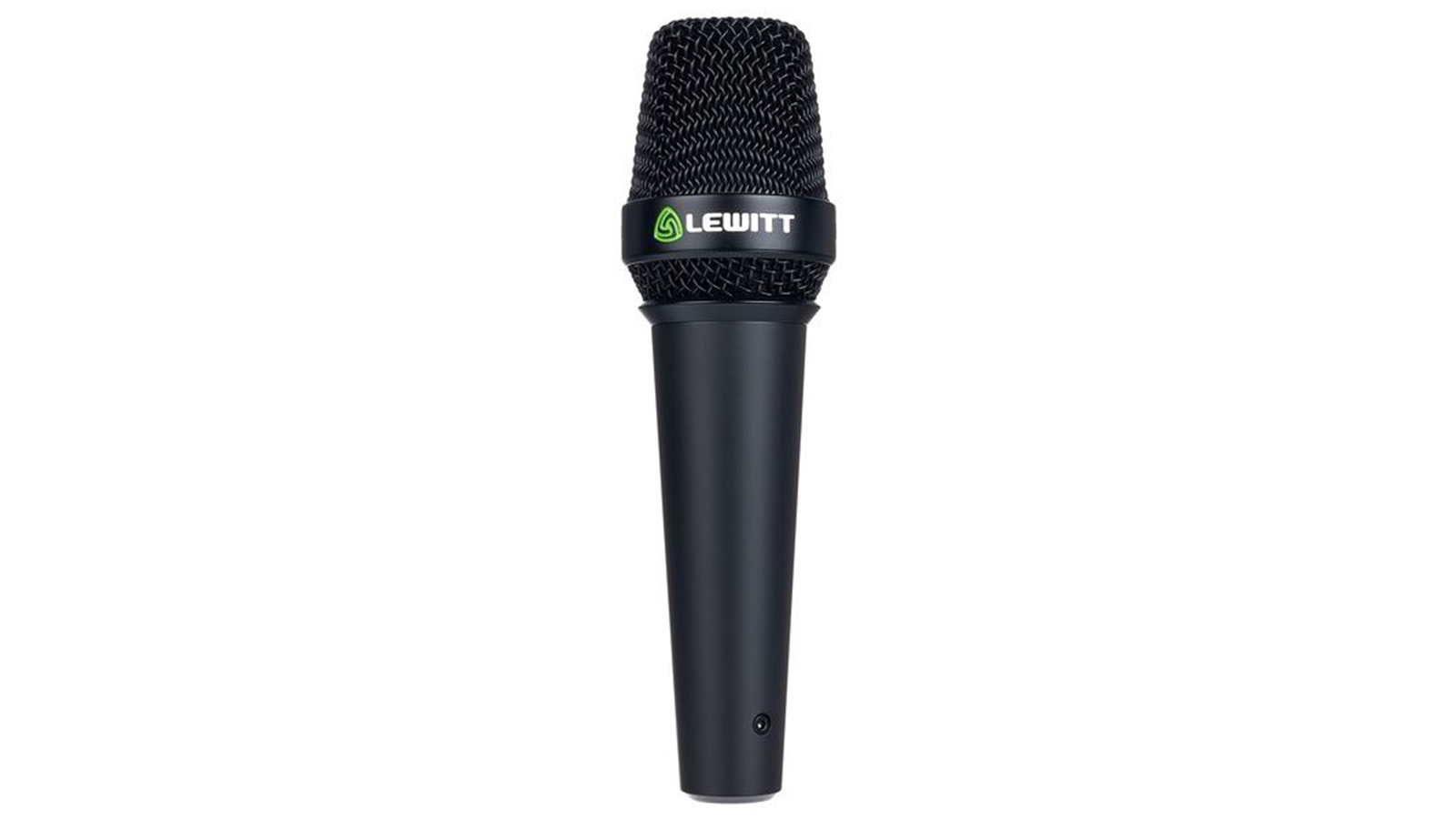
6. Lewitt MTP W950
Our expert review:
Specifications
Reasons to buy
Reasons to avoid
Lewitt is amongst the upstarts, being a young microphone brand that’s already claimed some serious ground against old-guard manufacturers - Telefunken included. This new-ish Austrian maker has captured hearts and minds in the studio, with its clear, candid AKG C414-killer in the form of the LCT 440 Pure, and its recent forays into tube condensers. With the MTP W950, Lewitt is looking squarely at the live scene.
The MTP W950 is a highly versatile stage condenser, designed ground-up for handheld vocal performance. The mic is rugged physically and sonically, with a few careful design moves to circumvent cupping feedback and plosives. Its W9 capsule is easy to remove, allowing you to access a 120hz low-cut filter, -12dB pad and a pickup pattern switcher between cardioid and supercardioid. What can’t it do?
It can’t stop being versatile, is what. The MTP W950 is also wireless-rig friendly, the W9 capsule being fully compatible with all Sony, Lectrosonics and all-but a couple of Shure transmitters. All this bang comes at the cost of a fair amount of buck, though, making this only really viable as a stage mic for professionals or dead-set piggy-bankers. Still, it’s quality bang, and well worth the buck.
Best style

7. Aston Apex
Our expert review:
Specifications
Reasons to buy
Reasons to avoid
Brave and braggadocious British brand Aston Microphones has won hearts and minds with its innovative array of versatile mics; you’d be hard-pressed to find a studio that hasn’t invested in one of its powerful condenser designs, given the ridiculous affordability of each relative to their quality of build and clarity of sound.
With the Apex, Aston are leaving the cosy warmth of the studio and planting themselves centre-stage. The Apex is a strikingly-designed handheld microphone that crams both active circuitry and dynamic practicality into a space-age chassis.
The Apex is dual-voiced, meaning you can select from one of two discrete signal paths for different vocal character. It can accept phantom power, too, the presence of which engages a Class-A preamp with 20dB gain. There are genuinely few vocal situations this microphone wouldn’t suit, from whisper-quiet vocalists to super-loud stages. The stylised design might be a little rich for some, but this is a statement-making live vocal mic.
Best handheld
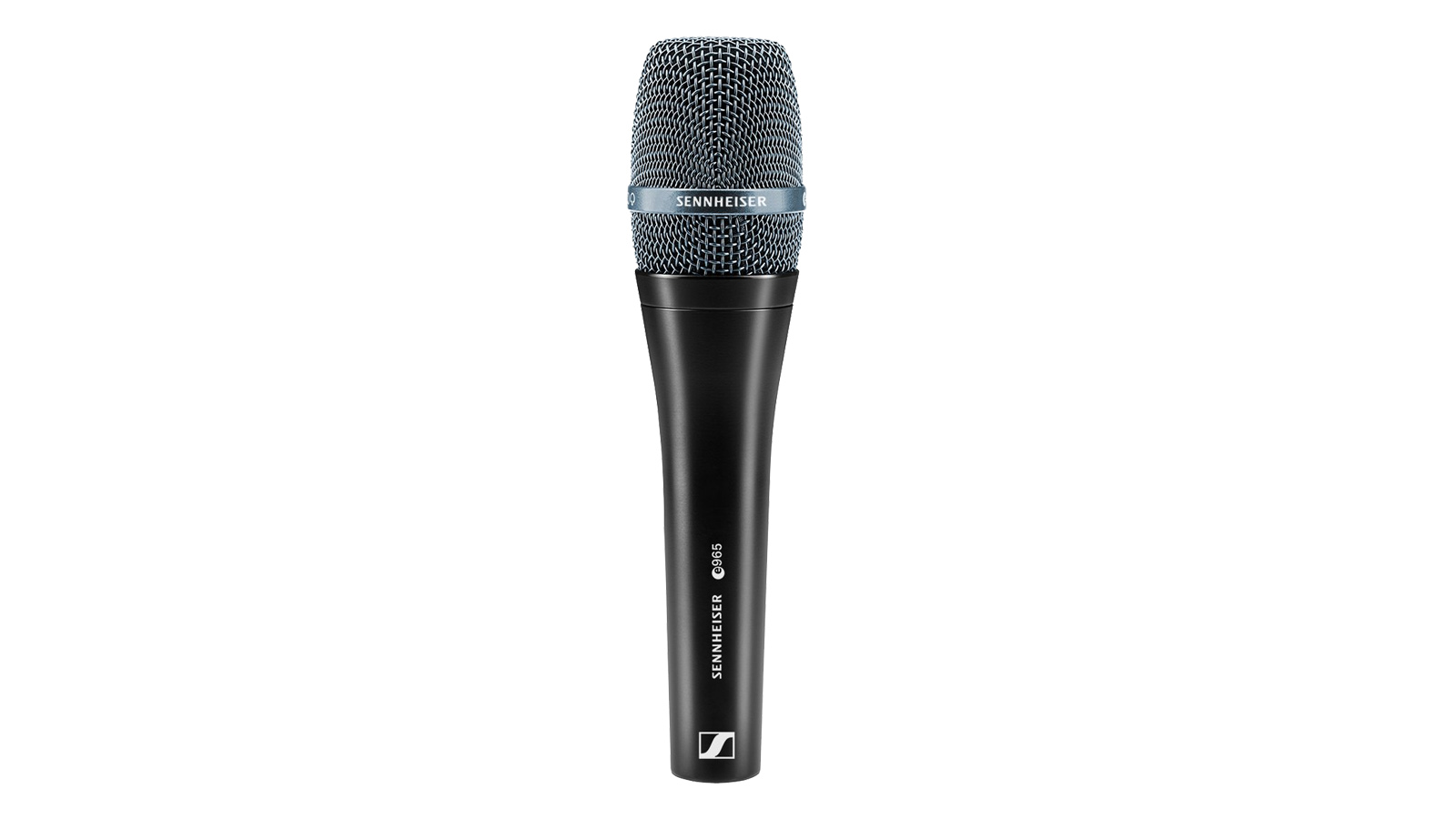
8. Sennheiser e 965
Our expert review:
Specifications
Reasons to buy
Reasons to avoid
A brand that’s always keen to push technological boundaries, Sennheiser has pulled off an impressive feat with the e 965. This is a product that defies the laws of physics – a large-diaphragm condenser designed specifically for live handheld use.
Ordinarily, condenser mics are very susceptible to handling noise, so this is a brave endeavour from the German pro-audio brand, but no doubt a bold move commercially.
Relatively crude dynamic microphones with limited frequency response own the stage because they’re rather good at rejecting handling noise. Unfortunately, they cannot come close to competing with the full response of a condenser mic, so audiences listening to talented singers with extensive vocal ranges risk being disappointed.
Enter the e 965, which picks up even the finest nuances in impressive detail. Polar patterns can be switched between cardioid and supercardioid to reject unwanted noise, there’s a low-cut filter to omit rumble, and you also get a built-in pop filter to handle plosives.
If your audiences demand to hear every detail, then this could be the mic for you.
Best frequency response
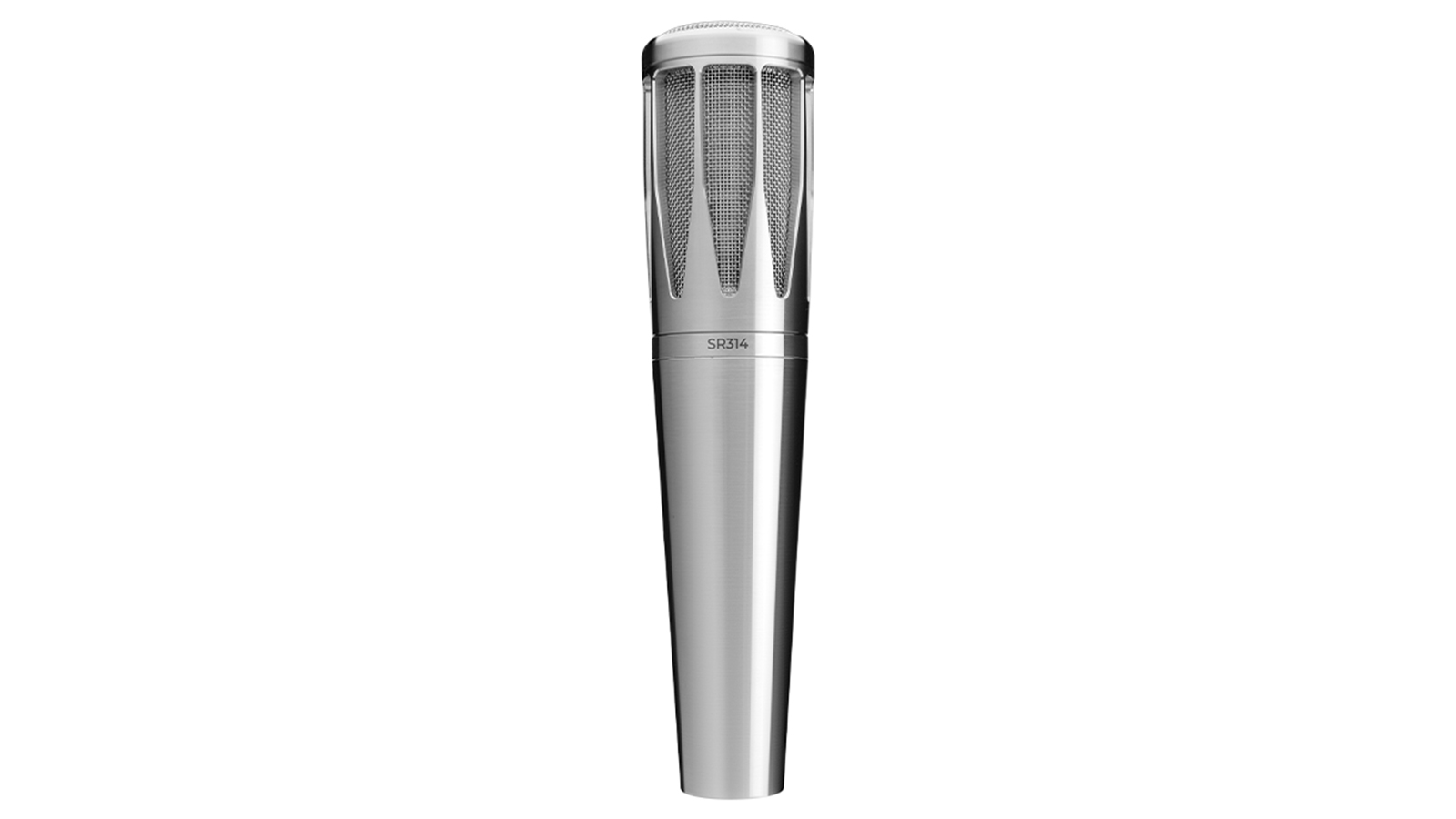
9. Earthworks SR314
Our expert review:
Specifications
Reasons to buy
Reasons to avoid
Earthworks has been quietly plugging away making some of the most considered tools in any audio engineer’s arsenal, and doing so since roughly the turn of the millennium. You’ll find Earthworks microphones gamely tackling timpanis in chamber halls around the world, and the brand already enjoys some justified acclaim for its work in the vocal mic space. The SR314 sits in that space, as a break-the-bank condenser of consummate quality.
The SR314 is a shiny throwback to the earlier days of handheld microphones, being in possession of a cool conical design with inverse-church-window grille holes. It’s got a real Ed Sullivan Show, early-Wogan, old crooner style written all over it.
The truly striking part of the SR314 is what’s held within this classy chassis, though. It is a small-diaphragm stage condenser, with a remarkably level frequency response from 20hz to 30khz and some impressive off-axis rejection. It is amongst the steeper-priced in the live vocal mic category, but not for nothing; this is a truly professional-grade stage condenser that is nothing but faithful to the sources it hears.
FAQs
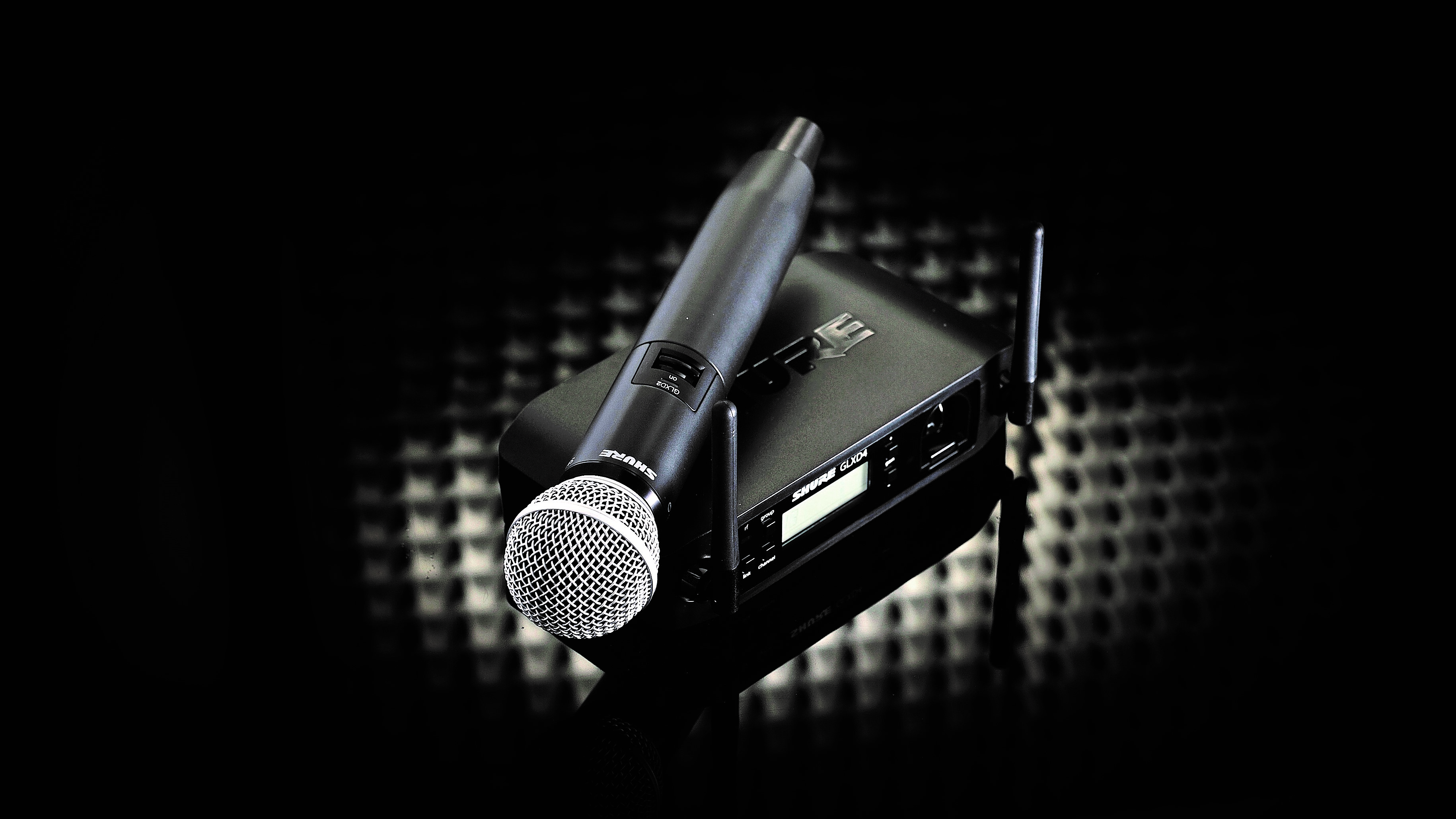
When choosing a mic, whether it be for stage or studio, base your choice on what sounds good. It seems obvious but it’s so tempting to pick a mic because your favourite artist uses one, or because you’re loyal to certain brands. Instead, open your ears and open your mind.
How should I choose a vocal microphone?
MusicRadar's got your back
A mic that makes one singer sound heavenly might make another sound rather ho-hum. It’s all down to the characteristics of their voices, the space in which they’re performing and the noise emitted by neighbouring instruments or performers. That said, if you’re on a tight budget then an inexpensive workhorse, such as the Shure SM58, will cover most bases.
Let’s consider some musical genres and how they might influence your choice of mic. Most people would agree that, in terms of ‘noise’, a singer-songwriter performing alone with just an acoustic guitar is poles apart from a five-piece death metal band playing like they mean business.
Sound engineers refer to that ‘noise’ as sound-pressure level, or SPL. Generally speaking, acoustic genres such as folk, classical and some jazz will naturally exhibit lower SPL levels than rock and all its sub-genres. But, of course, this is a huge generalisation – a full orchestra or a big-band jazz ensemble is going to generate high SPL levels, too. Even backstage machinery in an opera house will generate some unwanted noise. So, use your ears and a bit of common sense to work out roughly where your band sits in terms of SPL.
Why does this matter? Ideally, we want to hear every nuance of a performer’s voice, which means using a highly sensitive microphone that picks up a broad spectrum of sound. A large diaphragm condenser microphone, of the sort found in expensive studios, should do the trick nicely, but using one will almost certainly be a bad idea for a whole host of reasons.
What's the difference between a condenser and dynamic mic?
Should you use a dynamic microphone or a condenser microphone for vocals? Dynamic microphones are passive implements that do not require any form of power to operate. As such, they can take something of an aural beating, and greatly prefer clear sound sources right in front of them. Condenser microphones are active, powered by 48V phantom power through the XLR cable; they are much more sensitive, and can pick up much quieter sounds much further away.
Unless the sound pressure level (SPL) on-stage is low, a condenser microphone will pick up a lot of unwanted sound – primarily from drums, cymbals and any loud guitar amps inadvertently pointing towards them. If you’re running through PA speakers then that additional sound is going to make it impossible to isolate the vocal track at the mixing desk, making set-up a nightmare and ruining the clarity you set out to achieve in the first place.
Condenser mics are also more susceptible to feedback, and most are delicate, precision instruments not really suited to the rough and tumble of stage life or very loud vocalists.
They tend to range from pricey to super-pricey, so can be expensive to repair or replace.
However, stage condenser microphones designed specifically for vocals fare much better than the large-diaphragm studio condensers you’re more likely to see. They are carefully designed to reject signals from elsewhere and reduce handling noise, allowing you to benefit from their sensitivity.
Dynamic mics are generally much more at home in live settings. Their frequency range may be more limited, but that just makes them better at rejecting unwanted noise. They don’t feed back as readily, are very robust and can be bought for under $100/£75/€85.
So, if you’re miking up a well-mannered vocalist on a stage with a low SPL, and every detail of the performance is important to your audience, it may be worth considering a condenser mic – especially those designed for stage use, such as the Sennheiser e 965 or the DPA d:facto 4018.
But if volumes are going to get gnarly and you’re pushed for set-up time (who isn’t?), a dynamic mic will make much more sense. Is anyone in the audience really going to notice the difference? Probably not, because in most genres sound is only part of what makes a great performance.
What does frequency response mean in microphones?
The human voice is a rich, emotive instrument that’s capable of such incredible variety; whipping us into an intense frenzy one minute and seducing us into a state of deep meditative calm the next. It’s such a unique, varied instrument, too. Beyoncé sounds nothing like St Vincent, and neither of them sound anything like Dave Grohl. We wouldn’t have it any other way, but this mercurial quality does mean that not all mics suit all voices.
Microphones possess different frequency responses, depending on a number of factors relating to their design and the materials from which they’re composed. These frequency responses can be expressed on a graph, representing how a given frequency of sound is interpreted by the microphone.
A mic that features a subtle high-frequency boost, or possesses high ‘presence’, can do wonders for some vocals by retaining a sense of transparency and airiness. These qualities can also help them cut through the live mix. In fact, dynamic-mic designers often try to mimic the characteristics of condenser mics with such a boost, which can be reassuring for performers who are used to hearing themselves sing into a studio condenser.
However, additional presence can also make thin or strident vocals sound harsh and unforgiving. This is to say nothing of the feedback issues that higher frequencies often represent in loud environments or ‘lively’ rooms.
Meanwhile, microphones with a low-mid boost can help performers sound fuller and more sonorous, albeit at the potential expense of sounding ‘boomy’. The trick is to match voice to mic, either by being aware of the frequency-response characteristics or through experimentation. Just remember, if it sounds good, it is good!
Sometimes, what’s coming out of the PA may sound great but the performer just isn’t feeling it. In these circumstances, it’s worth checking the monitor mixes – the vocal IEM mix in particular – to see if they can be fixed with EQ or if a different mic will help. Many vocalists can be understandably very sensitive, if not downright anxious, about their performance, so it’s important that they’re happy with what they’re hearing. Swapping out mics might just be the confidence boost they need.
What polar pattern should my microphone have?
Microphone capsules not only have different frequency responses, but also different pickup patterns or ‘polar patterns’ – referring to their sensitivity to sound from different directions. These patterns can be plotted on a graph, showing which directions a mic hears and doesn’t hear from.
Most dynamic mics have a cardioid pickup pattern, which looks a bit like a heart – or, more accurately, a cartoon bum. These microphones hear everything in front of them, and hear some sounds from either side, but reject sound from behind them. Some are supercardioid or supercardioid-capable; they shear everything in front and some sounds from behind, but reject sounds from their rear sides.
Both of these patterns are very directional, and will help to reject undesirable off-axis sounds such as other instruments, band members and general stage hullabaloo – especially if the singer is ‘close miked’, which also helps to keep gain levels to a minimum. Backing off the gain will make unwanted noise less intrusive, and will minimise the risk of feedback, too.
Unfortunately, singing directly into a closely held mic is a real skill that takes discipline and practice. Vocalists that frequently move away from or to the side of a supercardioid mic, perhaps as a deliberate part of their stage act, will suffer inconsistent volume levels as well as the wrath of the sound engineer. Worse still, because of the proximity effect, which makes closer sources sound warmer, the singer may sound rich and powerful one second and emaciated and raspy the next.
So, if you like to move around a lot, stick to cardioid over supercardioid. Similarly, if you’re constantly attaching and unclipping your mic from a mic stand, look for a mic with low handling noise. Choosing the best microphones for live performance is always going to be a compromise but, fortunately, there are some outstanding options out there just waiting to help you or your vocalist shine.
How we choose live vocal microphones
Here at MusicRadar, we are experts in our field, with many years of playing, creating and product testing between us. We live and breathe everything music gear related, and we draw on this knowledge and experience of using products in live, recording and rehearsal scenarios when selecting the products for our guides.
When choosing what we believe to be the best live vocal microphones available right now, we combine our hands-on experience, user reviews and testimonies and engage in lengthy discussions with our editorial colleagues to reach a consensus about the top products in any given category.
First and foremost, we are musicians, and we want other players to find the right product for them. So we take into careful consideration everything from budget to feature set, ease of use and durability.
Find out more about how we make our recommendations and how we test each of the products in our buyer's guides.
Read more:
- Best cheap microphones: our pick of budget mics for every scenario
- Experience a new level of freedom with the best wireless microphones
Want all the hottest music and gear news, reviews, deals, features and more, direct to your inbox? Sign up here.
When Simon's childhood classical guitar teacher boasted he 'enjoyed a challenge', the poor man had no idea how much he'd underestimated the scale of the task ahead. Despite Simon's lack of talent, the experience did spark a lifelong passion for music. His classical guitar was discarded for an electric, then a room full of electrics before Simon discovered the joys of keys. Against all odds, Simon somehow managed to blag a career as a fashion journalist, but he's now more suitably employed writing for MusicRadar and Guitar World. When not writing or playing, he can be found terrifying himself on his mountain bike.
- James GrimshawFreelance writer
